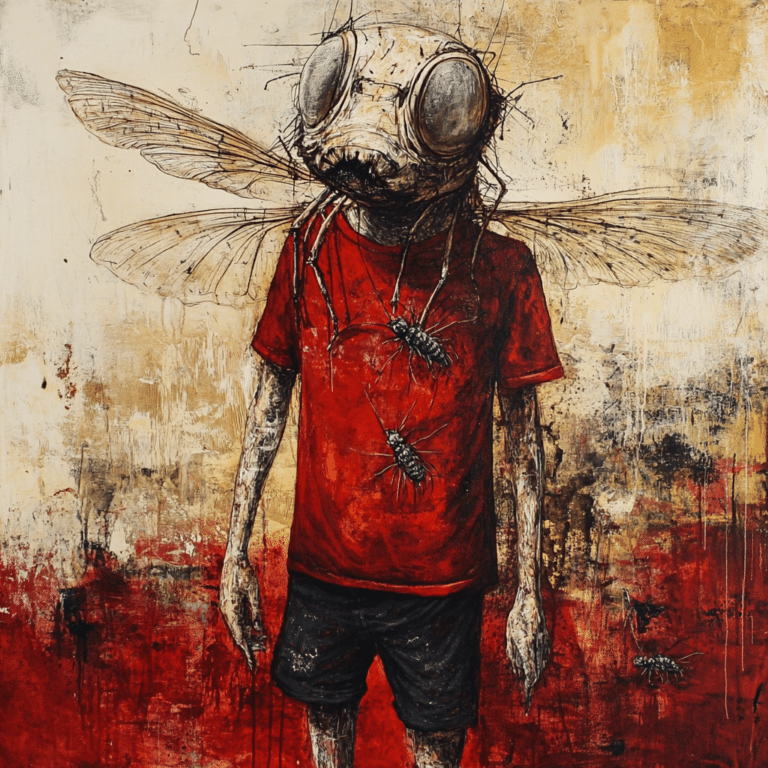Background on Sarra Gilbert’s Life and Family
Sarra Gilbert, a name that sends shivers down spines, is etched tragically into the annals of national crime stories. Sister to Shannan Gilbert, whose murder case brought horrendous attention to the Long Island Serial Killer, Sarra’s life is an unsettling narrative of unaddressed mental illness, familial disarray, and desperate poverty. Born into the embattled Gilbert family, her life story is a heart-wrenching blend of hope crushed under the weight of severe psychological disorders.
Growing up in Ellenville, New York, Sarra Gilbert’s life was far from idyllic. The Gilbert family struggled immensely, with finances stretched thin and emotional support often at a deficit. Mari Gilbert, the family matriarch, was a tireless advocate for her daughter Shannan, badgering police and media for progress in her murder investigation. Yet, Mari’s own life was marred by her inability to adequately manage Sarra’s burgeoning mental health issues. From an early age, Sarra exhibited signs of psychological distress, which would spiral into a nightmarish culmination on a fateful summer day in 2016.
The Influence of Mental Illness within the Gilbert Family
Mental illness wields a cruel and insidious influence, particularly when its victims are left to endure it alone. Sarra Gilbert’s tragic story is a stark example. Diagnosed with paranoid schizophrenia in her late teens, Sarra’s life was a nightmare of auditory hallucinations and devastating delusions. Mari Gilbert, despite her fierce advocacy for justice for Shannan, found herself overpowered by the gravity of Sarra’s mental health challenges.
Records indicate Sarra’s schizophrenia was marked by extreme episodes—she once attempted to drown her infant son and exhibited violent outbursts that strained familial relationships to the brink. On the dark day of July 23, 2016, overwhelmed by voices in her head, Sarra fatally stabbed her mother over 100 times. This event is gruesome evidence of the fatal link between untreated mental illness and catastrophic outcomes.

| Category | Details |
| Full Name | Sarra Gilbert |
| Date of Birth | Unavailable |
| Incident Date | July 23, 2016 |
| Location of Incident | Ellenville, New York |
| Victim | Mari Gilbert (mother) |
| Murder Details | Stabbed more than 100 times by Sarra Gilbert in her apartment building. |
| Mental Health Condition | Paranoid Schizophrenia |
| Voices in Her Head | Voices were telling her that her mother was dangerous |
| Legal Outcome | Convicted of second-degree murder |
| Sentence | 25 years to life in prison |
| Appeal Status | Appeal denied in 2021 |
| Background on Victim | Mari Gilbert was a vocal critic of law enforcement’s handling of her daughter Shannan’s case |
| Sarra Gilbert’s Sisters | Shannan, Sherre, and Stevie |
| Family Dynamics | Mari’s relationship with her daughters was a focus of media and films |
| Key Dates | – Murder: July 23, 2016\n- Conviction: 2016\n- Appeal Denial: 2021 |
| Relevant Movies/Media | “Lost Girls” (movie focusing on Mari Gilbert’s efforts concerning Shannan Gilbert’s case) |
| Police Department Involved | Ellenville Police Department |
The Legal Proceedings and Sarra Gilbert’s Conviction
Fast forward to 2017, Sarra Gilbert faced the full weight of the law. Convicted of second-degree murder, she was sentenced to 25 years to life in prison. The trial was a grim spectacle, heavily focusing on her mental condition. Psychiatric evaluations during the proceedings painted a harrowing picture of Sarra’s life dominated by schizoid paranoia and dangerous delusions. Ellenville Police Department investigations revealed she had been battling severe auditory hallucinations, which drove her to the unthinkable act of murdering her own mother.
Despite attempts to appeal her conviction, the court denied Sarra’s pleas in 2021, highlighting that, however tragically disturbed, she was cognizant enough to be held responsible. The legal saga underscored a critical yet often overlooked narrative – that the mentally ill, left untreated and unsupported, can become unexpected actors in true crime stories.
Comparing Treatment and Support: Then and Now
Could Sarra Gilbert have had a different fate had she received adequate mental health support early on? It’s a question that weighs heavily on any reflective mind. Over the past decade, awareness and resources for mental health have indeed seen some strides forward. In today’s world, mental health advocates push for early intervention programs, better psychiatric care, and broader accessibility to treatment, especially for economically disadvantaged families.
Analyzing Sarra’s tragic turn of events through the lens of contemporary mental health standards brings stark reality to light. Although there are success stories of improved care, gaps remain glaring. For instance, the average rate on a 30-year fixed mortgage, crushing fiscal concerns, further highlights the disparity in mental health support and general living conditions. Such financial strain can severely limit access to necessary care, often resulting in dire consequences, as seen in Sarra’s case.

The Role of the Media in Shaping Public Perception
Sensationalism is an art the media often masters, sometimes at a great human cost. The Gilbert family’s heart-wrenching tale is a testament to this. The myriad documentaries, notably “The Killing Season,” and relentless news coverage of Shannan Gilbert’s harrowing death often overshadowed the complex mental health nuances. Public discourse swayed more towards lurid fascination than empathetic understanding.
How does this media portrayal influence policy and public perception? When scrutinizing the Gilbert family through lenses of media coverage, it’s palpable how society’s focus is skewed. The intricate details of Sarra’s schizophrenia and the dire needs for mental health reform were shunted aside, leaving the public with a fragmented, often misinterpreted view of the real issues at play.
Insights from Mental Health Professionals
To truly grasp the depths of a tragedy like Sarra Gilbert’s, insights from mental health experts are indispensable. Psychiatrists like Dr. James Fallon have long elucidated the interplay between genetic predispositions and environmental triggers in fostering mental illnesses. Julia Cox, an advocate aiding families struggling with addiction and mental health issues, highlights systemic failures leading to underdiagnosed conditions.
Gathering perspectives from psychiatric professionals and social workers familiar with high-risk families underscores a harsh reality. Support systems for severe mental health conditions remain inadequate. The Gilbert family’s plight is not isolated but reflective of widespread systemic neglect, painting a grim picture that calls for urgent systemic overhaul.
Advocacy and Policy Changes: Looking Forward
In Sarra Gilbert’s tragedy lies an urgent call for robust mental health reform. Advocates like Mari Gilbert before her, echo the necessity for comprehensive legislative measures. This encompasses significant funding for mental health services, early diagnosis and intervention programs in schools, and sharply enhanced accessibility to psychiatric care.
Mental health advocates argue that today’s measures, although improved, still fall short. Economic barriers, such as those evident in housing voucher section 8 programs, hinder accessibility to adequate care for economically disadvantaged families. These financial strains reiterate the necessity for federal and state policies bolstering mental health services, mirroring support structures seen in more affluent communities.
Paying Tribute to Mari Gilbert’s Advocacy
The tragic end of Mari Gilbert, a relentless advocate for her daughter Shannan, resonates deeply within the tapestry of this narrative. Mari was more than a grieving mother; she was a beacon of tenacity who never wavered in her quest for justice. Her legacy casts a stark light on the instrumental role of media in keeping investigative pursuits alive.
Mari’s tragic murder by Sarra, interwoven with her fierce advocacy, embodies a narrative of unfathomable grief and relentless pursuit for truth. It implores society to recognize mental health with the same vigor and compassion Mari demonstrated in her relentless battles against indifference.
Conclusion
An exploration of Sarra Gilbert’s life is a staggering reminder of unaddressed mental illness’s devastation. It pushes us to reflect deeply and act decisively. As society progresses, stories like Sarra’s should galvanize change within mental health support systems, pressing for early intervention and comprehensive support. Sarra’s trajectory is not just a cautionary tale; it’s a poignant call for empathy, understanding, and systemic reform.
Behind the eerie headlines lie human souls yearning for support. The tragic odyssey of the Gilbert family underscores a dire need for empathetic understanding and substantial reform in the fight against the silent epidemic of mental illness. Their story, though filled with sorrow, offers us a chance for genuine progress and compassionate action.
Sarra Gilbert: Tragic Story of Mental Illness
From Fiction to Reality
It’s truly heart-wrenching how some lives can be fraught with turmoil. Take Sarra Gilbert’s story: a tale overshadowed by severe mental illness and tragedy. But did you know, a few celebrities have endured similarly tumultuous paths? For instance, Cheyenne Brando also faced the storm of mental health issues, leading to an equally tragic end Cheyenne Brando.
Moreover, it’s striking how mental illness doesn’t spare anyone, regardless of background or fame. In another vein, consider how top personalities like Madeline Pantoja have often struggled under the deluge of public and personal pressures Madeline Pantoja. Both these figures are stark reminders that emotional and mental struggles often lie beneath the surface.
Grappling Public Challenges
Public scrutiny can exacerbate personal demons. This is evident in the life of Sara Netanyahu who has been in the limelight for both her public role and personal controversies Sara Netanyahu. For Sarra Gilbert, the pressure cooker of personal expectations and public life might have compounded her mental health dilemmas, drawing a parallel to so many others who’ve lived under a similar cloud.
Fascinatingly, even glamorous figures aren’t immune to personal tribulations. Sarah Michelle Gella famously displayed immense bravery in discussing her own mental health journey Sarah Michelle gella. Her candidness about her struggles has inspired many to seek help, shedding light on the importance of mental wellness.
Tinseltown’s Hidden Struggles
It’s easy to forget that the allure of Hollywood masks lots of unseen battles. Even someone like Scarlett Johansson has had to contend with intrusive public and private stresses Scarlett Johansson. These stories remind us that mental illness can affect anyone—pervasive and relentless, it’s an unfortunate equalizer of human experience.
Ultimately, Sarra Gilbert’s story intertwines with those of notable figures who’ve braved their darkest hours. Whether it’s celebrities like Scarlett Johansson or systemic cases like Sara Netanyahu, these narratives urge us to continually cultivate compassion and understanding. The parallels help illuminate how important mental health support and awareness genuinely are.

What happened to Sarra Gilbert?
Sarra Gilbert was convicted of second-degree murder for stabbing her mother, Mari Gilbert, 227 times. She was sentenced to 25 years to life in prison, but her appeal was denied in 2021. Sarra suffers from paranoid schizophrenia, which led her to believe that her mother was dangerous.
What happened to Shannon Gilbert’s mom?
Shannan Gilbert’s mom, Mari, was murdered in 2016 by her other daughter, Sarra. Mari was a vocal critic of the police’s handling of Shannan’s case, insisting that her daughter’s death was a homicide.
How many daughters did Mary Gilbert have?
Mari Gilbert had four daughters, including Shannan and Sarra Gilbert.
What happened to Mary Gilbert?
Mari Gilbert was fatally stabbed more than 100 times by her daughter Sarra in July 2016. She had been advocating for her deceased daughter Shannan and was a critic of law enforcement’s investigation into Shannan’s death.
Who fathered Sara Gilbert’s children?
There is no public information available about who fathered Sarra Gilbert’s children.
Was the lost girls killer ever found?
No, the killer of the “Lost Girls,” including Shannan Gilbert, has never been found.
Where is Mari Gilbert buried?
Details about where Mari Gilbert is buried have not been publicly disclosed.
What happened to June Shannon’s oldest daughter?
Information about June Shannon’s oldest daughter isn’t provided in the given context, so it’s unclear from this content.
What happened to Carlie Brucia’s mom?
Details about Carlie Brucia’s mom are not provided within the given content, so her current situation can’t be determined from this information.
What age did Mary have a baby?
Information about the age Mari Gilbert had her first baby is not included in the provided content, so it can’t be determined from this context.
Why is Stevie Gilbert not in the movie?
Stevie Gilbert isn’t featured in the movie because the film focuses more largely on Mari Gilbert and her advocacy following Shannan’s death.
How accurate is Lost Girls?
“Lost Girls” is inspired by true events but, like many adaptations, may take some creative liberties for storytelling purposes. The depiction of the events and characters may not be completely accurate to real-life details.
What happened to the woman who played the mother in What’s Eating Gilbert Grape?
The woman who played the mother in “What’s Eating Gilbert Grape,” Darlene Cates, passed away in 2017.
Who are Shannon Gilbert’s sisters?
Shannan Gilbert has three sisters: Sarra, Sherre, and Stevie.
What happened to Gilbert’s parents?
The content provided does not mention any specific details about Gilbert’s parents, so their current status is unknown based on this context.





































